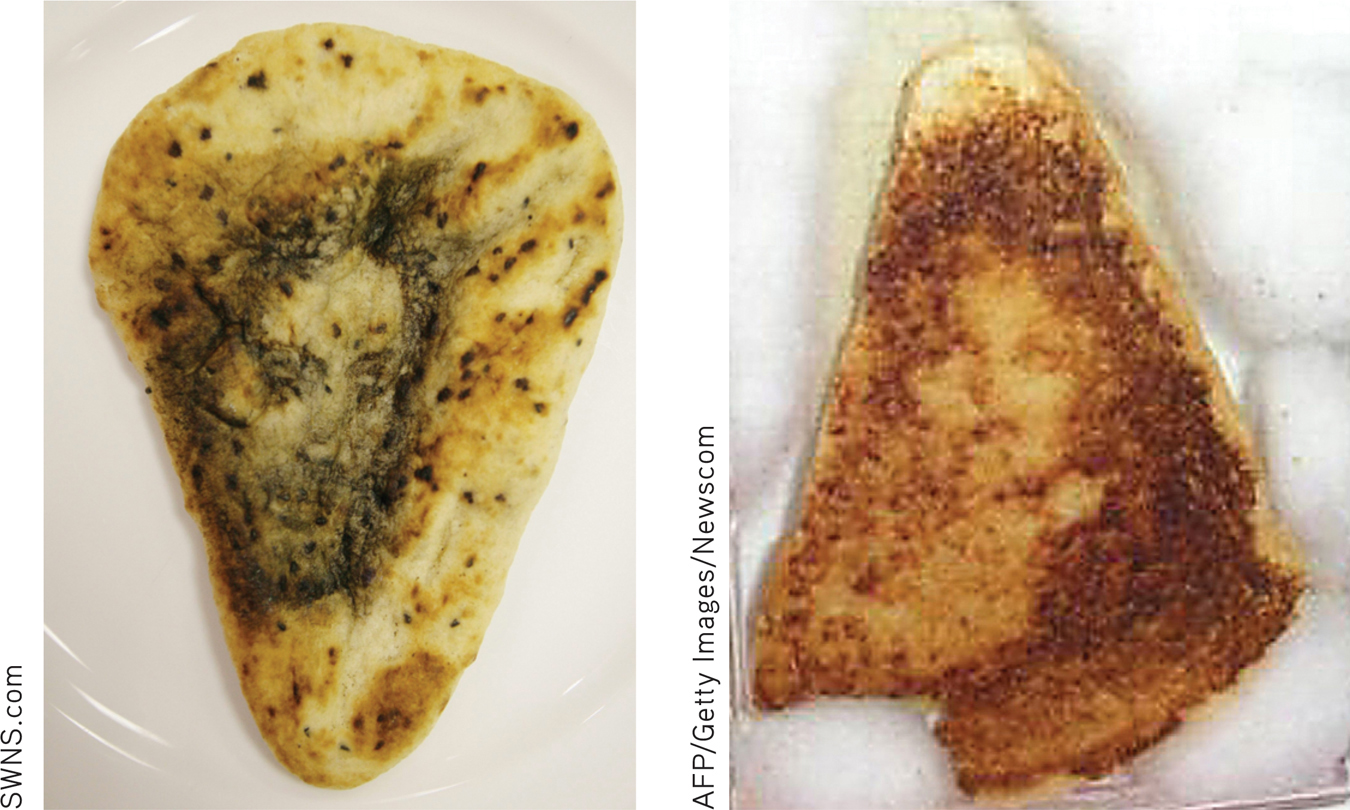3.7 The Effects of Experience on Perceptual Interpretations
Our educational, cultural, and life experiences shape what we perceive. As a simple example, consider a climbing wall in a gym. If your knowledge of climbing is limited, the posts, ropes, arrows, and lines look like a meaningless jumble of equipment. But if you are an expert climber, you see handgrips and footgrips, belays, overhangs, and routes of varying difficulty. Our different perceptions of a climbing wall are shaped by our prior learning experiences.
Learning experiences can vary not just from person to person but also from culture to culture. The Culture and Human Behavior box on page 126, “Culture and the Müller-Lyer Illusion,” discusses the important role that unique cultural experiences can play in perception.
Perception can also be influenced by an individual’s expectations, motives, and interests. The term perceptual set refers to the tendency to perceive objects or situations from a particular frame of reference. Perceptual sets usually lead us to reasonably accurate conclusions. If they didn’t, we would develop new perceptual sets that were more accurate. But sometimes a perceptual set can lead us astray. For example, someone with an avid interest in UFOs might readily interpret unusual cloud formations as a fleet of alien spacecraft. Sightings of Bigfoot, mermaids, and the Loch Ness monster that turn out to be brown bears, manatees, or floating logs are all examples of perceptual sets.
perceptual set
The tendency to perceive objects or situations from a particular frame of reference.
People are especially prone to seeing faces in ambiguous stimuli, as in the photos shown on the right. Why? One reason is that the brain is wired to be uniquely responsive to faces or face-like stimuli (Leopold & Rhodes, 2010; Pascalis & Kelly, 2009). Research by Doris Tsao (2006a, 2006b) showed that the primate brain contains individual brain neurons that respond exclusively to faces or face-like images. This specialized face-recognition system allows us to identify an individual face out of the thousands that we can recognize (Kanwisher & Yovel, 2009).
But this extraordinary neural sensitivity also makes us more liable to false positives, seeing faces that aren’t there. Vague or ambiguous images with face-like blotches and shadows can also trigger the brain’s face-recognition system. Thus, we see faces where they don’t exist at all—except in our own minds.

AFP/Getty Images/Newscom
CULTURE AND HUMAN BEHAVIOR
Culture and the Müller-Lyer Illusion: The Carpentered-World Hypothesis
Since the early 1900s, it has been known that people in industrialized societies are far more susceptible to the Müller-Lyer illusion than are people in some nonindustrialized societies (Matsumoto & Juang, 2008; Phillips, 2011). How can this difference be explained?
Cross-cultural psychologist Marshall Segall and his colleagues (1963, 1966) proposed the carpentered-world hypothesis. They suggested that people living in urban, industrialized environments have a great deal of perceptual experience in judging lines, corners, edges, and other rectangular, manufactured objects. Thus, people in carpentered cultures would be more susceptible to the Müller-Lyer illusion, which involves arrows mimicking a corner that is jutting toward or away from the perceiver.

In contrast, people who live in noncarpentered cultures more frequently encounter natural objects. In these cultures, perceptual experiences with straight lines and right angles are relatively rare. Segall predicted that people from these cultures would be less susceptible to the Müller-Lyer illusion.
To test this idea, Segall and his colleagues (1963, 1966) compared the responses of people living in carpentered societies, such as Evanston, Illinois, with those of people living in noncar-pentered societies, such as remote areas of Africa. The results confirmed their hypothesis. The Müller-Lyer illusion was stronger for those living in carpentered societies. Could the difference in illusion susceptibility be due to some sort of biological difference rather than a cultural difference? To address this issue, psychologist V. Mary Stewart (1973) compared groups of white and African American schoolchildren living in Evanston, Illinois. Regardless of race, all of the children living in the city were equally susceptible to the Müller-Lyer illusion. Stewart also compared groups of black African children in five different areas of Zambia—ranging from the very carpentered capital city of Lusaka to rural, noncarpen-tered areas of the country. Once again, the African children living in the carpentered society of Lusaka were just as susceptible to the illusion as the Evanston children, but the African children living in the noncarpentered countryside were not.
These findings provided some of the first evidence for the idea that culture could shape perception. As Segall (1994) later concluded, “Every perception is the result of an interaction between a stimulus and a perceiver shaped by prior experience.” Thus, people who grow up in very different cultures might well perceive aspects of their physical environment differently.
CONCEPT REVIEW 3.4
Perceptual Principles
Fill in the blanks using the correct term.
Question 3.17
| 1. | When Jenny was flying to the South Pacific, she saw several lush green islands that stood out in a sea of bright blue. In this example, the islands are the and the sea is the . |
Question 3.18
| 2. | As the football is hurtling toward you, it creates a progressively larger image on your retina, and the angle of the ball is constantly changing. Despite these drastic changes in sensory output, the phenomena of and enable you to continue to perceive the object as a football. |
Question 3.19
| 3. |
 If you followed the law of
, you perceived this arrangement as three groups of four dots.
If you followed the law of
, you perceived this arrangement as three groups of four dots. |
Question 3.20
| 4. |
 If you followed the law of
you perceived this arrangement as two groups of green dots and two groups of black dots.
If you followed the law of
you perceived this arrangement as two groups of green dots and two groups of black dots. |
Question 3.21
| 5. | Hundreds of people flocked to an Indiana town when it was reported that the face of a religious figure had appeared in a rust stain on the side of a water tower. This perception was probably an example of a . |
Test your understanding of Perception and Perceptual Illusions with
 .
.
Closing Thoughts

From reflections of light waves to perceptual illusions, the world you perceive is the result of complex interactions among distinctly dissimilar elements—environmental stimuli, sensory receptor cells, neural pathways, and brain mechanisms. Equally important are the psychological and cultural factors that help shape your perception of the world. As Mike’s story illustrated, the world we experience relies not only on the functioning of our different sensory systems but also on neural pathways sculpted by years of learning experiences from infancy onward.
Although he spent more than four decades totally blind, Mike never seemed to lack vision. With conviction, humor, and curiosity, he sought out a life of change and adventure. And he found it. Rather than expecting his surgery to fundamentally change his life, he simply welcomed the opportunity for new experiences. Throughout his life, Mike wrote, “I have sought change and thrive on it. I expected new and interesting experiences from getting vision as an adult but not that it would change my life” (May, 2004). As Mike points out, “My life was incredibly good before I had my operation. I’ve been very fortunate and had incredible opportunities, and so I can say that life was incredible. It was fantastic as a non-seeing person, and life is still amazing now that I have vision. That’s been consistent between not seeing and seeing. Experiencing life to its fullest doesn’t depend on having sight” (May, 2002b).
We hope that learning about Mike’s experiences has provided you with some insights as to how your own life experiences have helped shape your perceptions of the world. In the next section, we’ll provide you with some tips that we think you’ll find useful in influencing your perceptions of painful stimuli.